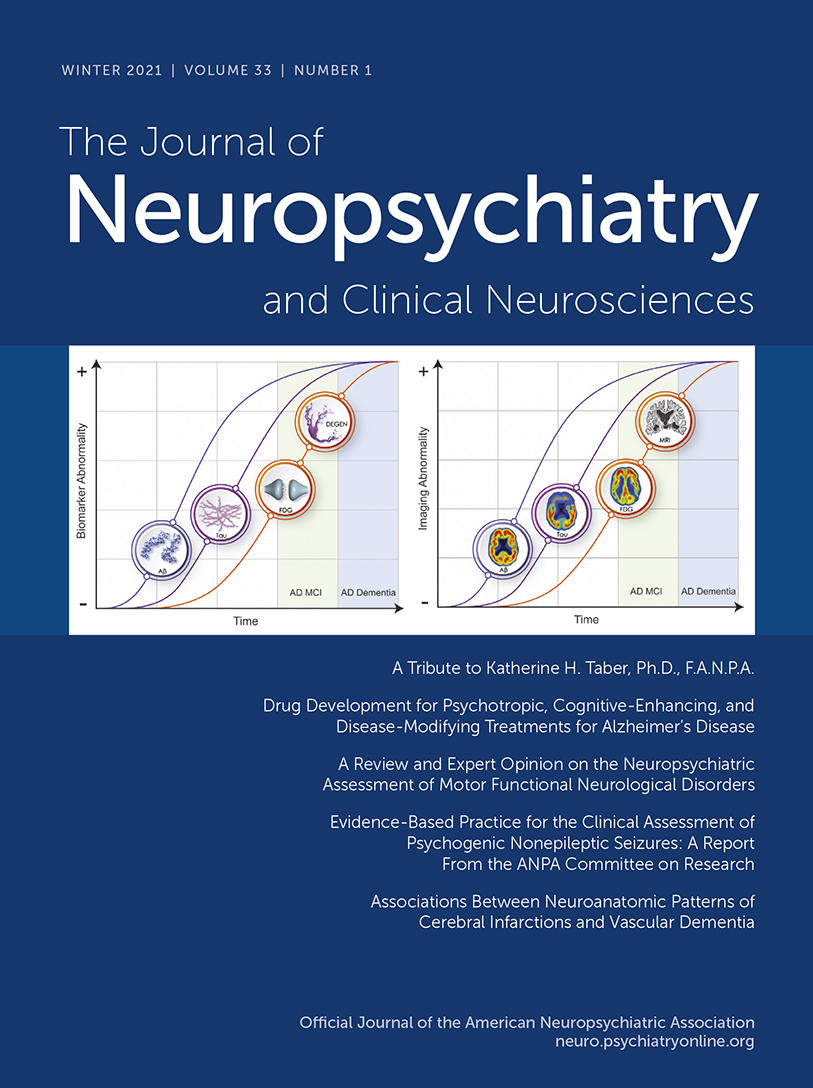A Tribute to Katherine H. Taber, Ph.D., F.A.N.P.A.

Katherine H. Taber, Ph.D., F.A.N.P.A.
Editor, Windows to the Brain, 1999–2020
Today, I am writing to express my profound gratitude to Katherine (Kathy) Taber, Ph.D., F.A.N.P.A., for her 22 years of service as my Co-Editor of the Windows to the Brain Section of the Journal of Neuropsychiatry and Clinical Neurosciences (JNCN) and for her service to the American Neuropsychiatric Association (ANPA). In May 2020, Dr. Taber retired, after more than a 40-year career in the field of neuroscience and 16 years with the Veterans Healthcare Administration (VHA). Kathy often described herself as a “generalist-neurobiologist.” She was very active in both research and educational endeavors throughout her career. However, she was most notable for her ability to use graphics to help teach neuroanatomy in a way that was understandable and usable to clinicians and for her passion in mentoring the next generation.
I first met Kathy in 1992 when we were both at Baylor College of Medicine, Houston. Kathy was an Assistant Professor working in a neuroradiology research lab, and I was a second-year psychiatry resident. We met as I was on my way to a bit of “supervision” with the Chief of Neuroradiology, subsequent to my patient having destroyed the MRI head coil. After a new and very clear appreciation of the financial cost of a head coil, the neuroradiologist directed the conversation to “why” I had ordered the MRI. As I shared my passions for understanding brain-behavior relationships with her, she quickly realized that she, a neuroradiologist, the lab’s neurobiologist, Kathy, and a future psychiatrist might be a good team. The goal would be to make unique and exciting contributions to neuroscience in a new way, something we now call, “translational medicine.” Kathy was really the key to this relationship, as she brought the exquisite expertise of the basic scientist to the two clinicians. This became the start of a wonderful 28-year working relationship that spanned two medical schools, two states, and three health care systems.
In the first few years of the partnership, the group developed and published materials that would bring psychiatric clinical concepts to neuroradiologists. Oftentimes, the work was done with photographs of X-ray films, colored pencils, and a paid medical illustrator. In 1996, I was called to the office of my chairman, Dr. Stuart Yudofsky, who gave me an assignment: “You must go to the ANPA annual meeting this year.” I went to the meeting, not knowing what to expect. I came back to Texas with an amazing excitement and a new “professional home.” We had found the perfect fit for our work with like-minded individuals. Two years later, in late fall of 1998, Dr. Yudofsky called me to his office again. This time, he wanted us to write a short piece with pictures and graphics for his journal, JNCN, something that would include a cover image and bring neuroscience and imaging to his subscribers. We really had an open slate to create and educate for this piece. We chose “Neuropsychiatric Presentation of Multiple Sclerosis” (1).
Dr. Yudofsky, his editorial team, and Journal subscribers liked the paper very much. He approached us again asking to make this work a regular feature of JNCN… and the section would need a name; thus, Windows to the Brain became our signature, and, little did we know at the time, a centerpiece for much of our lives’ work. In short, time passed quickly, modern graphics tools and computers took us to places with the series that we never could have imagined in 1992. Windows to the Brain has now completed its 22nd year, with 87 papers in the series and an APPI textbook, and has served to mentor well over 30 trainees in scientific writing.
With the wars in Afghanistan and Iraq came the need to apply the understanding of neuroanatomy and use of neuroimaging to postdeployment mental health. Kathy and I were fortunate to be part of a North Carolina team that developed a new VHA center to research, educate, and clinically care for veterans with postdeployment mental illness (VISN 6 MIRECC); thus the move for both of us to North Carolina. Through the MIRECC, we continued the work of bringing basic neuroscience and clinical neuropsychiatry together on a larger scale for 16 years, all the while seeing the JNCN Windows to the Brain as our first home.
On May 31, 2020, Kathy retired to spend more time with family and to be ready for her first grandchild. Her accomplishments have been extensive in her career. Kathy has coauthored over 275 scientific publications, two textbooks, and 37 textbook chapters and was a professor with Edward Via College of Osteopathic Medicine. Kathy served on countless national grant review panels, in leadership roles in ANPA including Councilor, and as a member of both the Scientific Program and Education Committees and was honored with Fellow status in the organization (the only neurobiologist to ever achieve this status). She had multiple other roles and contributions to neuroscience and academia throughout the decades.
After 28 years of collaborative work, 103 coauthored publications, and personal career mentorship from one of the very best, I will miss Kathy greatly, as will all the VISN 6 MIRECC and JNCN teams. I know that my colleagues at JNCN join me in thanking her for all the years with us and wishing her great happiness and new adventures in the coming years.
1 : Neuropsychiatric presentation of multiple sclerosis. J Neuropsychiatry Clin Neurosci 1999; 11:5–7Link, Google Scholar



